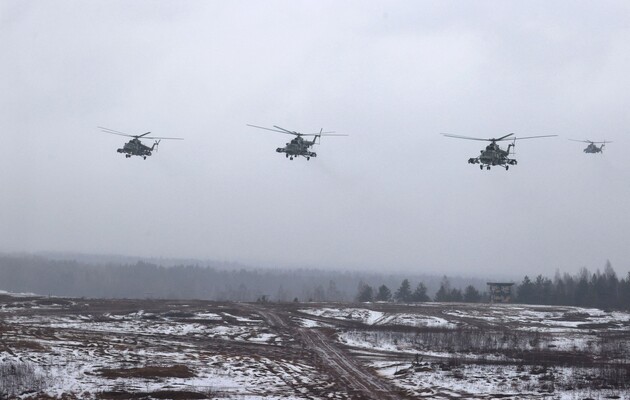Ukrainian engines for Russian helicopters: lessons learnt for the State

article by Ihor Huskov, Major General of the Security Service of Ukraine (retired), PhD in Law Analytical Center for the Study and Counteraction to Hybrid Threats, Kyiv
The detention of Vyacheslav Bohuslayev, the president of Motor Sich JSC by the Security Service of Ukraine became the high-profile event of the last few days. Bohuslayev is suspected of collaborating with Russia and aiding to the aggressor state. At the same time, almost all news reports on this matter focus on the personal responsibility of Bohuslayev and some of his subordinates, who practically turned the production facilities of the Ukrainian aircraft engines production leader into a kind of branch for equipping and repairing Russian attack helicopters Mi-8 "Sapsan", KA-52 “Alligator” and Mi-28 “Night Hunter”.
There is no doubt about the validity of the SBU's accusations regarding Bohuslayev's collaborationism. However, to some extent, this case is the result of many years of miscalculations and gaps in the state policy on preservation and development of the state strategic scientific and industrial potential. After all, it was the state that at one time deprived Motor Sich (and hundreds of other enterprises) of the "strategic" status, which made it easier for Bohuslayev and his allies to work in the interests of the Russian Federation. According to the recent study of Center for Analytical Studies and Countering Hybrid Threats, those policy’s gaps and errors remain unfixed.
The "List of enterprises that are of strategic importance for the economy and security of the state", which included JSC "Motor Sich", was first approved in Ukraine only in August 1997 by Decree of the Cabinet of Ministers of Ukraine #911. The List was immediately limited to enterprises of the state sector of the economy, which were owned by the state or included the state-owned actives. At that time, the process of privatization of industrial enterprises had been going on for several years. Such a delay in the formation of the List led to the fact that at the time of its adoption, 11 thousand medium and large enterprises of the metallurgical complex, electric power industry, chemical and petrochemical industry, some of which previously worked in the interests of the military industrial complex of our country, were already privatized.
Oddly enough, almost immediately after its establishment, the process of shortening this register actively began through the exclusion of those enterprises that aroused the privatization interest of various financial and industrial groups, including Russian ones. The long-term absence of normatively defined criteria for classifying business objects as those of strategic importance for the economy and security of the state (approved by the Cabinet of Ministers only in May 2003) definitely contributed to voluntarism in the "include-exclude" decision-making. And the very approach to the formation of the criteria raises many questions, because in the following years they were repeatedly changed without any official explanation or scientific justification. Moreover, the concept of "strategic enterprise", defined through the prism of exceptional (strategic) importance for the defense and economic potential of Ukraine, is still missing in the current legislation.
Thus, only in June 1999 and in February 2000, by decision of the CMU, more than 30 large industrial and manufacturing enterprises immediately "disappeared" from the List, including the "Starokramatorskyi" and "Pervomayskyi" machine building plants (respectively, the production of barrels for tanks and artillery systems; hydraulic motors, hydraulic pumps, fuel regulating equipment, pneumatic and hydraulic units of control systems for rotorcraft, aircraft and missile equipment of the Armed Forces); OJSC "Lysychanska Soda" (monopolist in the production of baking soda in Ukraine); Cherkassy OJSC "Azot" (a monopolist in the production of caprolactam in Ukraine); "Kyiv Silk Factory" (the only domestic enterprise specializing in the production of natural silk fabrics); "Zavalivsky Graphite Combine" (the only graphite mining enterprise in Europe); JSC "Zaporizhsky Factory of High-Power Transformers" (a monopolist in the production of transformers in Ukraine) and others. According to special criteria that were adopted much later, all these enterprises should have been on the List.
“Motor Sich” turn came during the peak of Russian aggression against Ukraine. At the beginning of March 2015, the Cabinet of Ministers of Ukraine approved a new version of the "List of state-owned objects of strategic importance for the economy and security of the State". "Motor Sich" was not included in the list and lost its "strategic" status. In fact, it was from that time that the state completely lost already minimal control over this enterprise according to the Law of Ukraine "On the Management of State-Owned Objects". As it turned out, the last shaky state obstacle to joint business projects with an aggressor country was eliminated. After all, the released fragments of Bohuslayev’s telephone conversations with his Russian “partners” leave no space to speculate on his "moral reservations" and "feelings of patriotism".
Overall, over the past 25 years, several hundreds of business entities in various sectors of the Ukrainian economy were excluded from the List of Strategic Enterprises. Today, it contains 285 economic objects, which is several times less than in August 1997. At the same time, the Cabinet of Ministers of Ukraine has never provided an official explanation why any of those enterprises suddenly lost their strategic importance, even if their production still remains critically important for ensuring Ukraine's defense capability.
In addition to "Motor Sich", the negative consequences of such "de-strategization" in the conditions of military aggression of the Russian Federation were clearly demonstrated by the situation with PJSC "Novokramatorsk Machine Building Plant" (NKMZ), which disappeared from the List of Strategic Enterprises at the same time as "Motor Sich". In February 2022, on the third day of the full-scale armed invasion of Russia, the private management of NKMZ decided to stop the operation of the enterprise, despite the fact that the plant was involved in the production of large-caliber projectiles, modern domestic artillery weapon systems and 122 mm artillery barrels. Only 4.5 months later, the Verkhovna Rada of Ukraine adopted a resolution on the alienation of the property of PJSC "Novokramatorsk Machine-Building Plant" in the interests of the defense of Ukraine.
Recently, Ukraine has been trying to urgently take the necessary measures to correct mistakes. Thus, during the Yalta European Strategy Forum "YES Brainstorming 2021" in Kyiv, President Zelensky emphasized the need to maintain state control over "Motor Sich". Also, Ukrainian Parliament endorsed draft laws No5397 On the prohibition of privatization of defense enterprises that manufacture weapons and No7566 On the alienation of property of PrJSC "NKMZ". Due to the consistent statesmanship position, the National Security and Defense Council of Ukraine systematically expands the scope of sanctions against individuals and legal entities for cooperation with the aggressor country.
However, the state policy should not be a situational reaction to a separate problem, which suddenly gets significantly worse during the war, but a complex of mutually coordinated measures aimed at preventing such problems.
Center for Analytical Studies and Countering Hybrid Threats analyzed "de-strategization" of the Ukrainian economy sectors and its painful consequences and developed the key recommendations for the state lawmakers and the Cabinet of Ministers of Ukraine:
- develop new "criteria for classifying objects as having strategic importance for the economy and security of the state" regardless of the form of ownership;
- carry out a full revision of all industrial and scientific and technical potential available in the state, based on a clear normative definition of their "strategic importance" through the optics of importance for ensuring the needs of state defense and protection of national interests;
- prohibit the sale of any assets of strategic enterprises, regardless of the form of ownership (individual objects, property complexes, shares, etc.) to citizens and legal entities from the Russian Federation, Belarus or other states that supported Russian aggression in Ukraine;
- normatively enshrine the forced return to state ownership of the assets of strategic enterprises directly or indirectly owned by citizens of Ukraine, in respect of which personal economic sanctions have been imposed by the Decree of the President of Ukraine on the basis of the decision of the National Security and Defense Council of Ukraine;
- to develop a targeted State program of financial support for the innovative activities of strategic enterprises of the public sector of the economy, including through the implementation of projects funded by financial institutions of the EU, the USA and other countries, which will be allocated as part of the implementation of the "Ukraine Recovery Program".
Obviously, we are talking not about reviewing the results of privatization, but about the need to ensure a balance of the interests of the state and business when it comes to the assets of the private strategic enterprises working for the defense sector of Ukraine.
The key goal is to ensure uninterrupted production of the necessary defense industrial commodities and to prevent any new attempts of direct or indirect use of Ukrainian enterprises in the interests of the aggressor country. That is why we urgently need to correct the mistakes and miscalculations made earlier. This is the main lesson for Ukraine.
This publication is based on the results of the research project “Identifying and analyzing “corrosive” investments into Ukrainian economy as an element of the hybrid warfare”. To be continued.
Read this article in russian and Ukrainian at the links.
Please select it with the mouse and press Ctrl+Enter or Submit a bug











 Login with Google
Login with Google